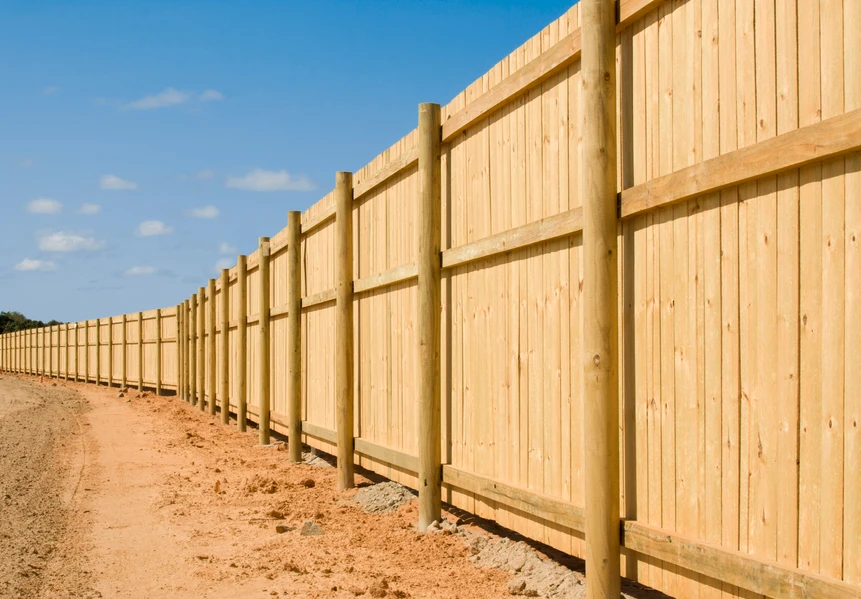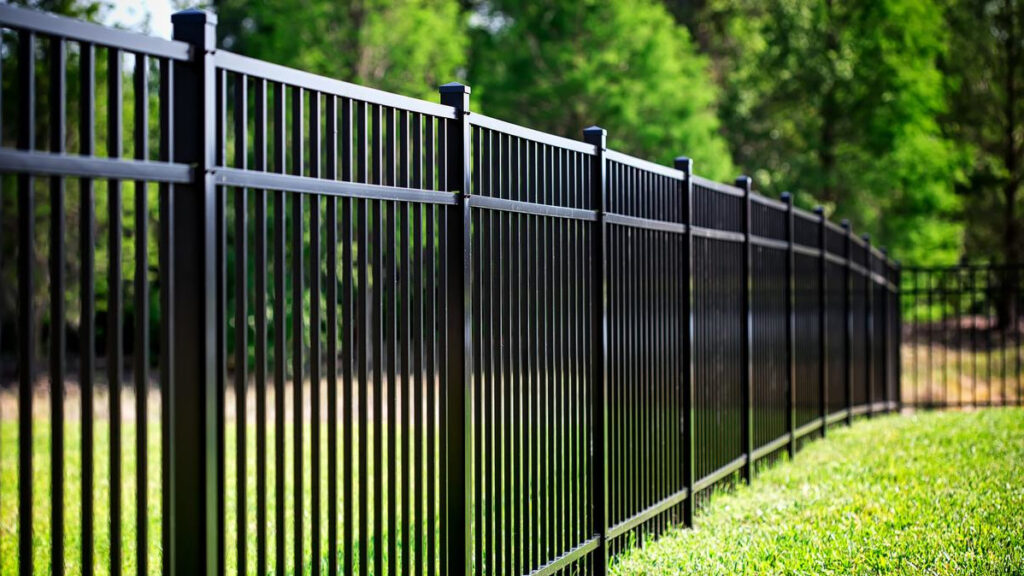A Comprehensive Guide to Fencing Install: What You Need to Know Concerning Secure Fencing Solutions
When it involves setting up a fencing, you have actually got a great deal to consider. From choosing the best products to comprehending neighborhood regulations, each action can feel frustrating. You'll need to evaluate your residential property and choose if you wish to take on the setup yourself or work with a specialist. But that's simply the beginning. Allow's check out the vital aspects that can make or damage your fence task.
Understanding Various Types of Fencing Products
When you're choosing a fencing, understanding the various kinds of fence products is crucial. Each material offers distinct benefits and drawbacks, influencing your choice. Timber gives a classic look and can be customized, yet it needs routine maintenance and may rot with time. Plastic is low-maintenance and sturdy, resisting fading and parasites, but it can be costlier upfront. Chain-link fencing is economical and sensible for enclosing large locations, though it lacks privacy and aesthetic allure. Steel fence, like wrought iron or light weight aluminum, provides strength and elegance however might require corrosion protection. Composite materials mix the most effective of wood and plastic, using resilience with a natural appearance. Consider your spending plan, preferred visual appeals, and upkeep choices when reviewing these choices. Ultimately, choosing the best product will assist you develop a fencing that fulfills your needs and boosts your home's worth.
Assessing Your Home and Fence Demands
Prior to you begin your fencing installation, it's important to analyze your home boundaries and the function of your fence. Comprehending local guidelines and permits will certainly additionally assist you stay clear of any type of lawful issues down the line. By considering these aspects, you'll guarantee your fencing fulfills both your needs and neighborhood standards.
Property Borders and Lines
Comprehending your property boundaries is important for an effective fence installation, as it not only helps you determine where your fence will go yet additionally ensures you're valuing your next-door neighbors' space. Beginning by reviewing your building deed or survey, which normally lays out the precise boundaries. You might additionally desire to consult with an expert land surveyor if you're not sure.
Remember, regional zoning laws may dictate fencing placement and elevation, so check those guidelines also. Taking these steps guarantees your fence is properly positioned and certified, making the whole process smoother for you.
Function of Fence
Third, fence can specify your residential or commercial property borders, making it clear where your area finishes and your neighbor's begins. A well-placed fencing can assist take care of noise from close-by roads or neighbors and also maintain pets and kids risk-free. By assessing your details needs, you can select the appropriate kind of fencing to attain these benefits properly.

Local Laws and Permits
Exactly how can you ensure your fencing installment complies with neighborhood regulations? Some areas call for permits for any new fence, while others might only need them for taller structures.
In addition, take into consideration home lines and any type of easements on your land. Marking your borders can stop conflicts with next-door neighbors or prospective lawful issues. By understanding these guidelines in advance, you can stay clear of pricey mistakes and establish your fencing is developed to last, enhancing both your home's worth and your peace of mind.
Local Laws and Permits for Fence
Before you start your fence project, it's important to examine neighborhood policies and get any kind of required licenses. Each city or county has its own policies concerning fencing height, products, and placement. These laws ensure that your fence follows safety and security requirements and community aesthetics.
You might need to send a fencing plan, describing measurements and products. Some areas might also call for a survey to confirm residential property boundaries.
Disregarding to comply with these policies can cause penalties or compelled elimination of your fence, squandering both money and time. Take the time to research and secure the proper authorizations for a smooth installment procedure. This action is important in seeing to it your task straightens with local laws and community criteria.
Selecting Between DIY Setup and Expert Solutions
Are you considering whether to tackle the fence installation yourself or hire an expert? If you're helpful and have experience with similar projects, DIY may save you money.
Mounting a fencing takes time, and if you're managing a hectic routine, employing a specialist can guarantee it obtains done efficiently. If your backyard has challenging terrain or particular layout requirements, experts bring proficiency that can make a distinction.
Last but not least, consider local laws. A specialist knows the licenses and codes needed, aiding you avoid possible penalties. Inevitably, evaluate your skills, time, intricacy, and regulations to make the ideal choice for your fence project.
Step-by-Step Overview to Fencing Setup
As soon as you've determined to progress with your fence setup, following a structured step-by-step strategy will ensure a smooth procedure. Beginning by marking the fence line with risks and string to picture the format. Next, examine neighborhood regulations to verify compliance with elevation and building lines.
Dig message openings at least 2 feet deep, spaced according to your fencing type-- normally 6 to 8 feet apart. Put the blog posts into the openings and load them with concrete for stability. When the blog posts are established, attach the straight rails or panels, making certain they're level.
Safeguard the panels or pickets, validating they straighten properly. If you're utilizing gateways, mount them last, guaranteeing they turn freely. Check for any loosened connections and make required modifications. Your fencing needs to currently prepare to improve your residential or commercial property and offer the privacy or security you need!
Upkeep Tips for Durability of Your Fencing
To maintain your fence looking terrific and lasting much longer, regular maintenance is vital. You should set up a cleansing routine, examine for any damages, and use safety layers as required. By staying proactive with these jobs, you'll assure your fencing remains strong and eye-catching for years ahead.
Routine Cleansing Set Up
Beginning by rinsing your fencing with water at least once every period to get rid of dust and particles. Don't fail to remember to inspect my company for any kind of rust on metal fences; a cord brush can assist remove it, adhered to by a coat of rust-resistant paint. Maintaining your fence tidy not just enhances its appearance yet likewise expands its life, saving you money in the lengthy run.
Inspect for Damages
On a regular basis checking your fence for damage is crucial if you intend to preserve its integrity and longevity. Begin by strolling around your fence to try to find visible signs of wear, such as splits, loose boards, or corrosion. Pay unique attention to the base and blog posts, where wetness can cause considerable issues. If you observe any damage, keep in mind and figure out the urgency of repairs. Dealing with small problems quickly can stop them from rising right into bigger, a lot more pricey problems. Examine for any type of indications of bugs, like termites or woodpeckers, that might jeopardize your fence's structure. Validate that your fence remains secure by checking for any type of leaning or drooping areas. Normal inspections will certainly keep your fence looking wonderful and functioning effectively for years ahead.
Apply Protective Coatings
After checking your fencing for damages, applying safety layers is a key step in ensuring its long life. Depending on the material, you'll wish to select the right kind of layer. For wooden fences, a high-grade sealant or wood tarnish can stop moisture absorption and discourage bugs. If your fence is plastic or steel, think about a UV-protective spray or paint to stop fading and corrosion.
Make certain to cleanse the surface completely prior to application, as dust and gunk can undermine the coating's effectiveness. Use the layer in completely dry weather for far better adhesion, and don't neglect to adhere to the manufacturer's instructions for the ideal outcomes. Routinely reapply every couple of years to keep your fencing looking great and standing strong against the components.
Cost Factors To Consider and Budgeting for Your Fencing Project
When planning your fence project, understanding cost considerations is necessary to staying within budget plan. Beginning by establishing the best site sort of material you desire, as expenses can differ significantly between timber, vinyl, and steel. Do not neglect to aspect in labor costs-- working with experts may save you time however can boost your overall expenses.
Following, measure your home to calculate the direct video required, as this straight influences material prices. article source Furthermore, take into consideration any permits you could require, which can include to your spending plan.

Last but not least, it's an excellent idea to reserve a contingency fund for unexpected costs. By preparing thoroughly and considering these aspects, you can produce a realistic budget plan that satisfies your fencing needs without damaging the bank.
Regularly Asked Questions
For how long Does the Average Fence Setup Take?
The standard fence setup normally takes one to three days, depending upon the fencing type and dimension of your lawn. You'll need to take into consideration any type of delays due to weather or allow needs too.
What Should I Do if My Fence Is Harmed?
If your fencing is damaged, first assess the extent of the damages. Repair minor issues yourself, however, for significant troubles, consider getting in touch with a specialist. Don't wait also long; it'll aid avoid further issues.
Can I Mount a Fencing on an Incline?
Yes, you can install a fence on an incline. You'll need to change your installment method, either by stepping the panels down or utilizing a racked layout to assure security and proper placement with the surface.
What Are the Best Practices for Fencing Paint?
To paint your fencing effectively, start with correct cleansing and sanding. Usage high-grade paint and use in also strokes. Do not forget to select the best climate for painting, guaranteeing it's completely dry and light.
Just how Usually Should I Check My Fencing?
You need to check your fence at the very least two times a year, concentrating on signs of damages, rot, or corrosion. Regular checks aid you capture issues early, ensuring your fencing stays sturdy and visually attractive longer.